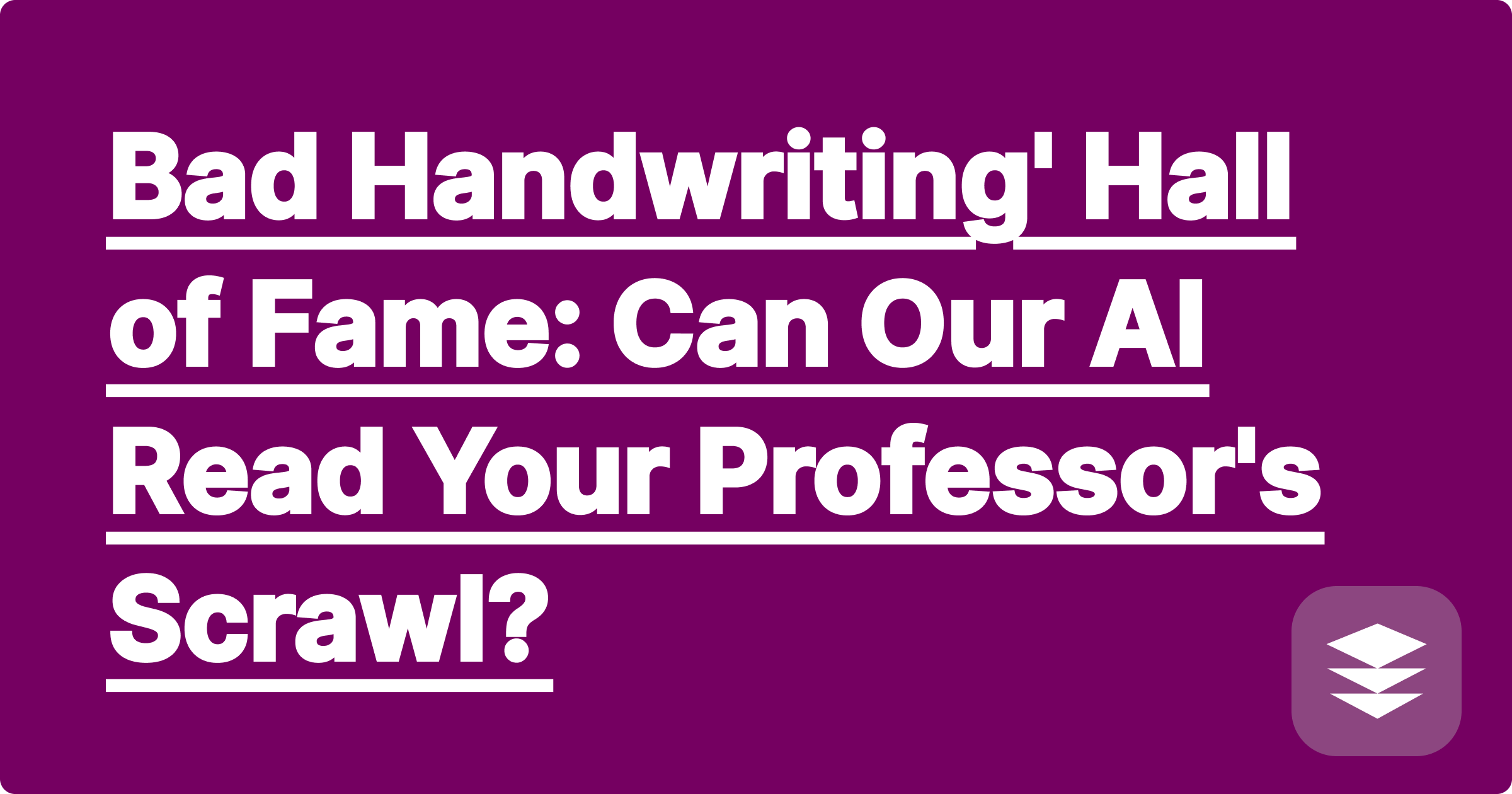
Every student has had that one professor. They are a brilliant genius in their field, a fountain of incredible knowledge. There's just one problem: their handwriting looks like a seismograph reading during an earthquake. They fill the whiteboard with crucial equations and diagrams, you snap a photo at the end of class, and when you review it later, you have no idea what it says. How are you supposed to digitize messy notes when they're barely legible to the human eye?
Your first instinct might be to use a standard Optical Character Recognition (OCR) app. You point your phone at the picture, and it spits out gibberish. This is because most OCR is trained on clean, printed text. It can't handle the weird loops, connected letters, and inconsistent spacing of real-world handwriting. It especially fails when it comes to the complex symbols and subscripts of math and science. You need a specialized tool: an ocr for bad handwriting.
We decided to put our GPAI Solver's image recognition engine to the ultimate test. We scoured the internet and asked students for submissions to our "Bad Handwriting Hall of Fame"—a collection of the most chaotic, messy, and illegible examples of academic handwriting we could find. We wanted to answer one question: can our AI read this?
[Image: A gallery of three different, genuinely terrible examples of handwritten notes on a whiteboard or paper. They should be barely legible. Alt-text: The "Bad Handwriting Hall of Fame" challenge for an AI OCR tool.]
When you upload one of these messy photos to GPAI, it doesn't just look for letters. It uses a multi-layered approach:
The results were astonishing. For handwriting that was merely "messy," the AI achieved near-perfect accuracy. For the truly "hall of fame" level scrawls, it might make a few mistakes, but it almost always captured the overall structure of the equation, which the user could then quickly correct. A student can take a photo of a nearly illegible board, get a digitized version from the solver or note taker function of the AI, make a few quick edits, and then have the AI solve it or add it to their cheatsheet.
A: A good photo is key. Get as close as you can, make sure the image is in focus, and minimize glare. Even the best AI can't read what it can't see.
A: Yes. Because the GPAI engine is specifically trained on STEM content, it is far more likely to correctly identify these complex symbols than a generic OCR tool. It "expects" to see them in the context of a physics or math problem.
Don't let your professor's brilliant but chaotic handwriting be a barrier to your learning. With a powerful AI OCR tool, you can digitize the most challenging notes, turning that confusing photo into a clean, editable, and solvable problem. You can finally understand what's on the board.
[Got a professor with terrible handwriting? Put our AI to the test. Try the GPAI Solver's picture recognition today. Sign up for 100 free credits.]
What if Newton Had an AI? How 'Principia Mathematica' Could Be Written in a Week
Could You Run a Simulated Mars Colony Using an Engineering AI Solver?
Teach Me Poker': Can Game Theory AI Explain Winning Strategies?
What if Your Entire Degree Was an Open-Book Exam? How to Prepare with AI.
Re-writing History: What if the Titanic Was Designed with FEA and AI?
The Psychology of the 'Humanizer': Why We Trust 'Natural' Language More
A Day in the Life of a GPAI Engineer: The Problems We Solve for You
We Fed Our AI the Toughest 'Unsolvable' Math Problems. Here's What It Did.
The Carbon Footprint of Your Brain vs. AI: An Energy Efficiency Comparison
Bad Handwriting' Hall of Fame: Can Our AI Read Your Professor's Scrawl?